Potential YoYo Co. Le Tap
Reviewed by Chris Rhoads
July 20, 2011
Introduction
Ok, just about the only thing I like better than reviewing a prototype or preproduction yo-yo is when said prototype or preproduction comes from a young upstart company. There are absolutely none of the preconceived notions that come with reviewing something from an established manufacturer. All you have is the specs and a few forum pictures do go on. I’m not trying for hyperbole here but to a reviewer this is almost like exploring undiscovered lands. Recently I was sent a new yo-yo called the Le Tap by a company called Potential YoYo Co. Immediately, I loved the name, no pretense, it just states what it is. I hope it isn’t just a placeholder. Well, enough talking about it. Lets see what Cameron Schaefer and his new company have to offer.
Specs
• Diameter: 53.6mm
• Width: 43.97mm
• Weight: 78 grams
• Response: Hat-Pads
• Bearing: Standard 8 Ball stainless steal
Construction
This is a prototype, as such Cameron has told me that there will be adjustments to the design and there is no box to be talked about at this time. From a distance this yo-yo looks like it has a straight V-Shape profile, but on closer inspection you begin to see a subtle H-Shape step that pushes more weight to the rims. The outer edges of the rims have been rounded making for an extremely comfortable yo-yo to hold in the hand. Just about he only harsh angle on the whole yo-yo is in the response area where it transitions from catch zone to the gap. I have some concerns that this angle could be a potential string cutter if the yo-yo is bead blasted in any way but I have been assured that the gap is going to be masked. This will easily solve the problem as long as the mask is extended up the catch zone by a couple of millimeters. The cups are rounded on the inside with just one break in the flow just under the rims. The curved hub in the center looks like an extension of the inside curve. I would have liked an IGR cut into the underside but from what some of the other manufactures tell me IGRs are the hardest and costliest thing for an outside machine shop to cut. That being the case I can see how it would be dropped from a first release. I will not discuss the finish at this point simply because there isn’t one. All in all this is a solid design that has a lot of potential. I am interested in seeing what the fleshed out final product will look like.
Weight
In its current form the Le Tap is a heavy yo-yo. There is no way around this fact; it is pushing 78 grams. Cameron’s target weight for the Le Tap in AutoDesk was 68 grams but something was lost in translation from computer to machine shop. Even with this hiccup the Le Tap is quite stable on the string. It is a slight strain to push the Le Tap around on the string but on the up side it spun for darn near ever without wanting to tilt. I won’t beat this proto up too much for the weight, this is the main area of concern that Cameron will be focusing on for his final version. If the cups were cut a little deeper and the step in the catch zone was a little more dramatic this could solve the weight issue and add to the overall look of the yo-yo.
Response and Bearing
The Le Tap comes stock with a set of thick General-Yo Hat Pads installed as the response. This is a wise choice; they break in well and give tight binds. The pads are slightly recessed so there should be more than enough space if the end user would rather pour in some silicone.
The stock bearing is just a generic steel 8-Ball that is rather loud. I would probably end up replacing it with something a little higher quality since this one did not quiet down even after a thorough application of V4M.
Playability
Slow and smooth, that is pretty much the best way to describe it. I did get use to the weight somewhat after extended play sessions and I adjusted my tricks to the speed of the yo-yo. The upside is that the added weight gave plenty of time to make those adjustments due to the extended spin times afforded by those chunky rims. During the play test I worked on another trick given to me by my friend Nhi. This new one is called Rejection to Tower. It is easy to set up but hard to execute. There is a rejection at the end that wraps around all the strings and forms a loop to catch the yo-yo. You have to land perfectly or the trick is a complete failure. I was only able to land it once on this yo-yo, but that may be more to do with my skills than with the Le Tap itself. One thing I found very helpful while learning this trick was the smooth catch zone. Exaggerated H-Shapes and harsh steps in the catch zone would grab the string during the rejection and foul up the trick. The Le Tap was easier to get the string to flip out like it should thanks to the smooth walls. In its present form grinds are out, raw yo-yos are just not made to grind and there is no IGR to thumb grind with. The final run will be bead blasted so I will hold off on commenting about grinds until the production runs are completed.
Final Thoughts
When all is said and done this yo-yo is still in the prototyping stage so I won’t rail on the weight. I see a huge amount of potential in this design. It has a great feel in the hand and will scream once the weight is reduced. In its current form it is playable especially if you want a slower yo-yo and it may actually be perfect for a style of play that I could not test out, 3A. I remember what Paul Yath told me during my Crucial Delicious review, “a good 3A yo-yo needs to be low walled with lots of rim weight instead of center weight to reduce tilt and it should be heavier.” This yo-yo seems to fit all those qualities perfectly. I would love to hear from anyone that throws 3A, try out a couple Le Tap and let me know if this is a good yo-yo for 3A play. As is Potential YoYo Co. has just that, potential, and seem to be headed in the right direction. Keep up the good work Cameron.

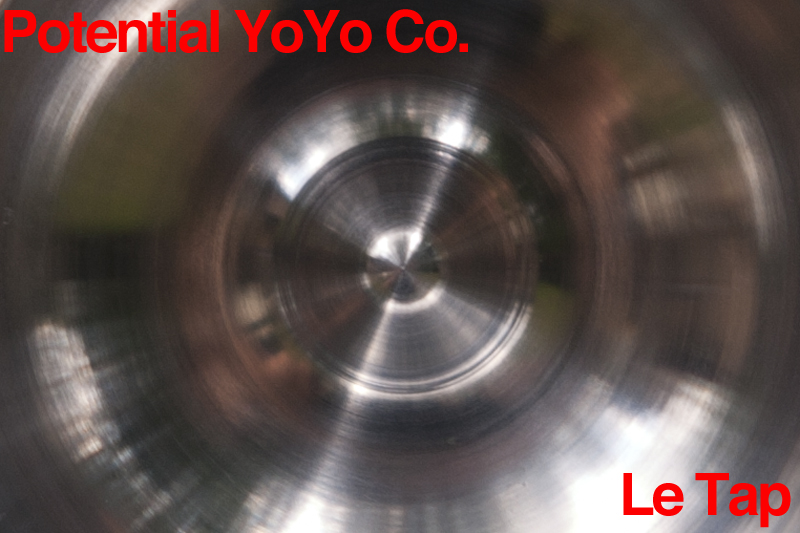
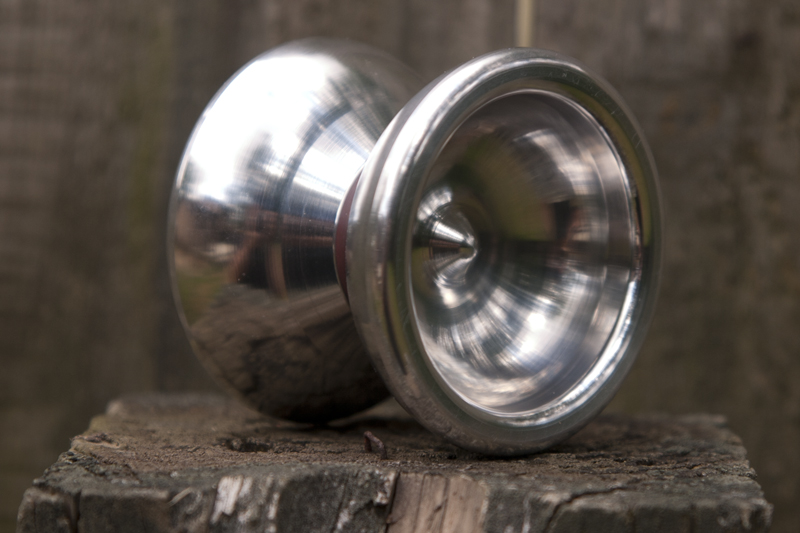
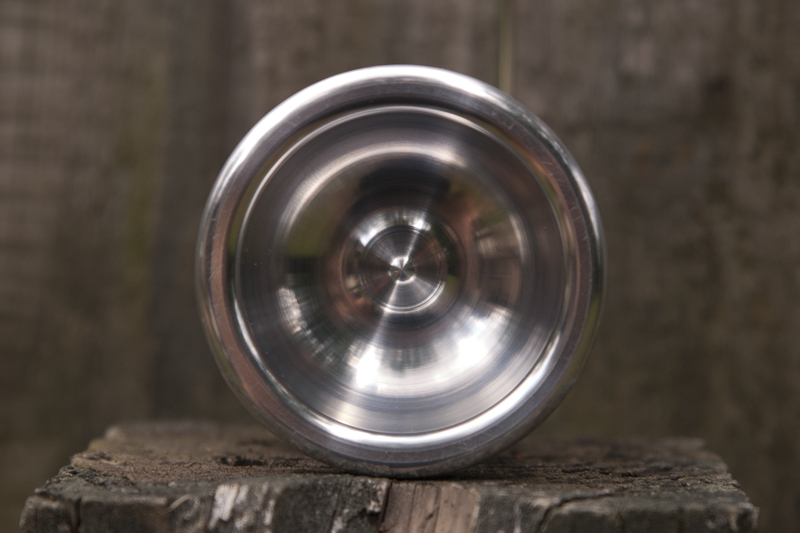
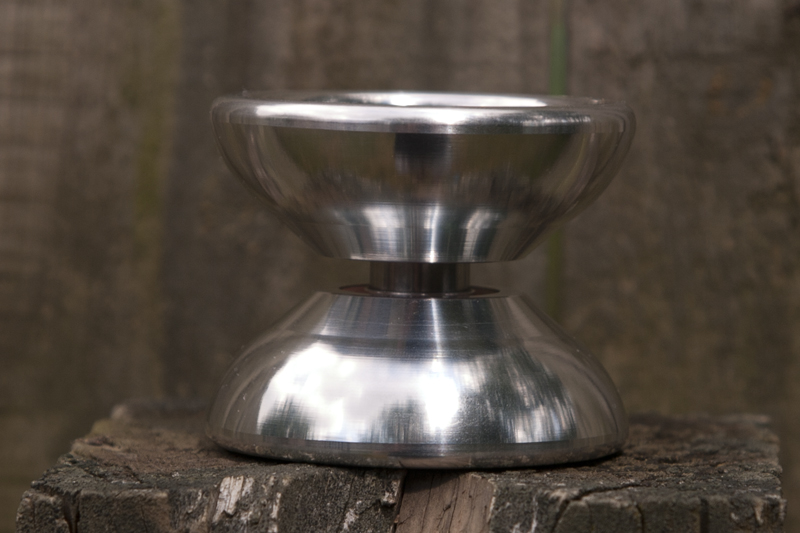
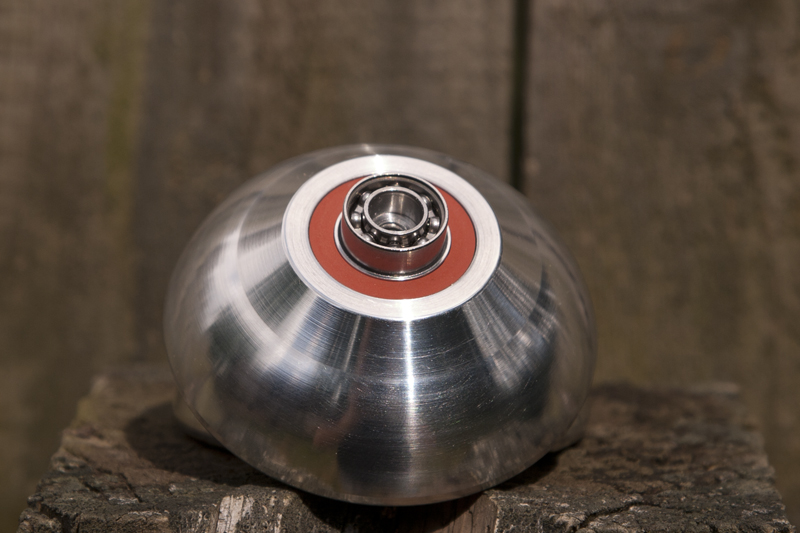
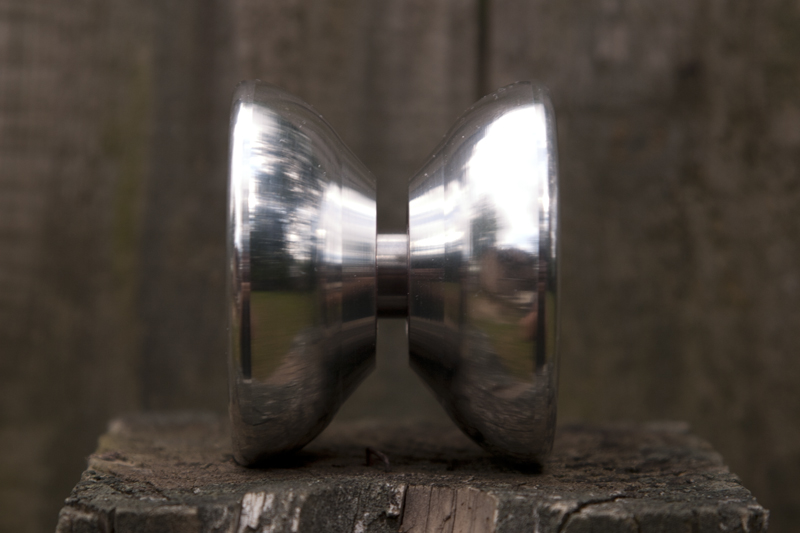

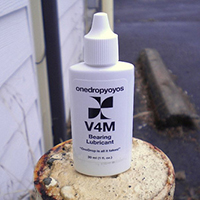
#1 by Mike Green on July 20, 2011 - 9:08 pm
Quote
It would be nice to see a smoother transition into the response area, and it definitely could use a diet. (imo)
The shape is fantastic though…
#2 by Andy Jaracz on July 20, 2011 - 9:20 pm
Quote
“I see a huge amount of POTENTIAL in this design.”
Haha, punny.
#3 by WTFEVER on July 25, 2011 - 2:48 pm
Quote
Frankly as lonbg as the transition is smooth and not cutting string, I like response transition. The sharp corner will allow one more control over the tilt of the yoyo. Ie it is a lot easier and faster to correct a slight string tilt.
Just my 2cents though, looks nice,and I like heavier yoyo I think there is a place for a 70+ yoyo, but perhaps not a lot of sales ???
Good luck with it.
#4 by Kenneth on January 2, 2012 - 12:41 am
Quote
I like the design a lot, and i would be very happy if he does get it into the 68ish gram weight.